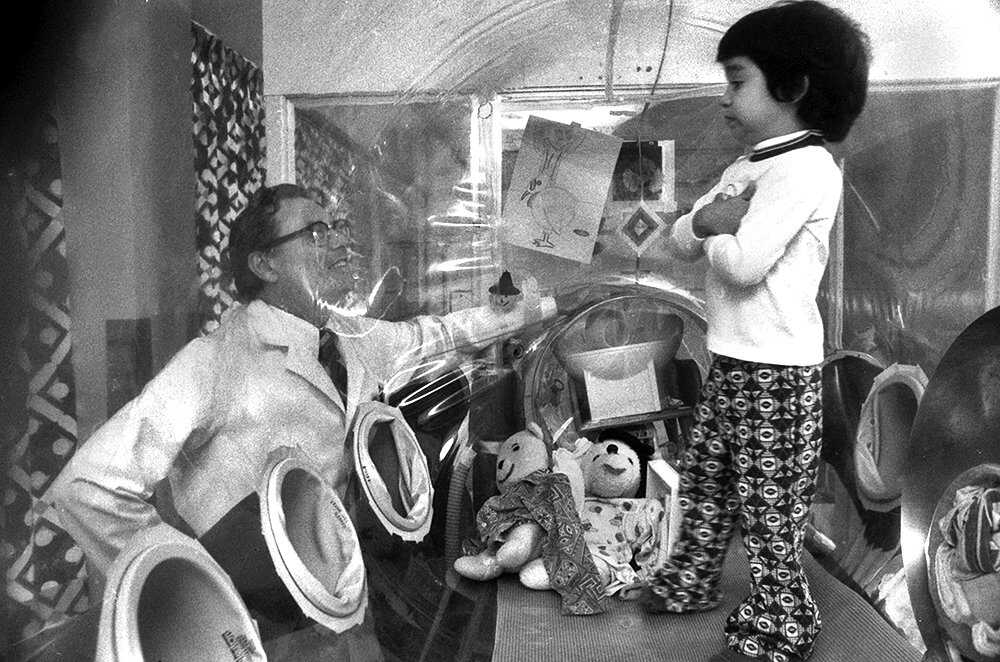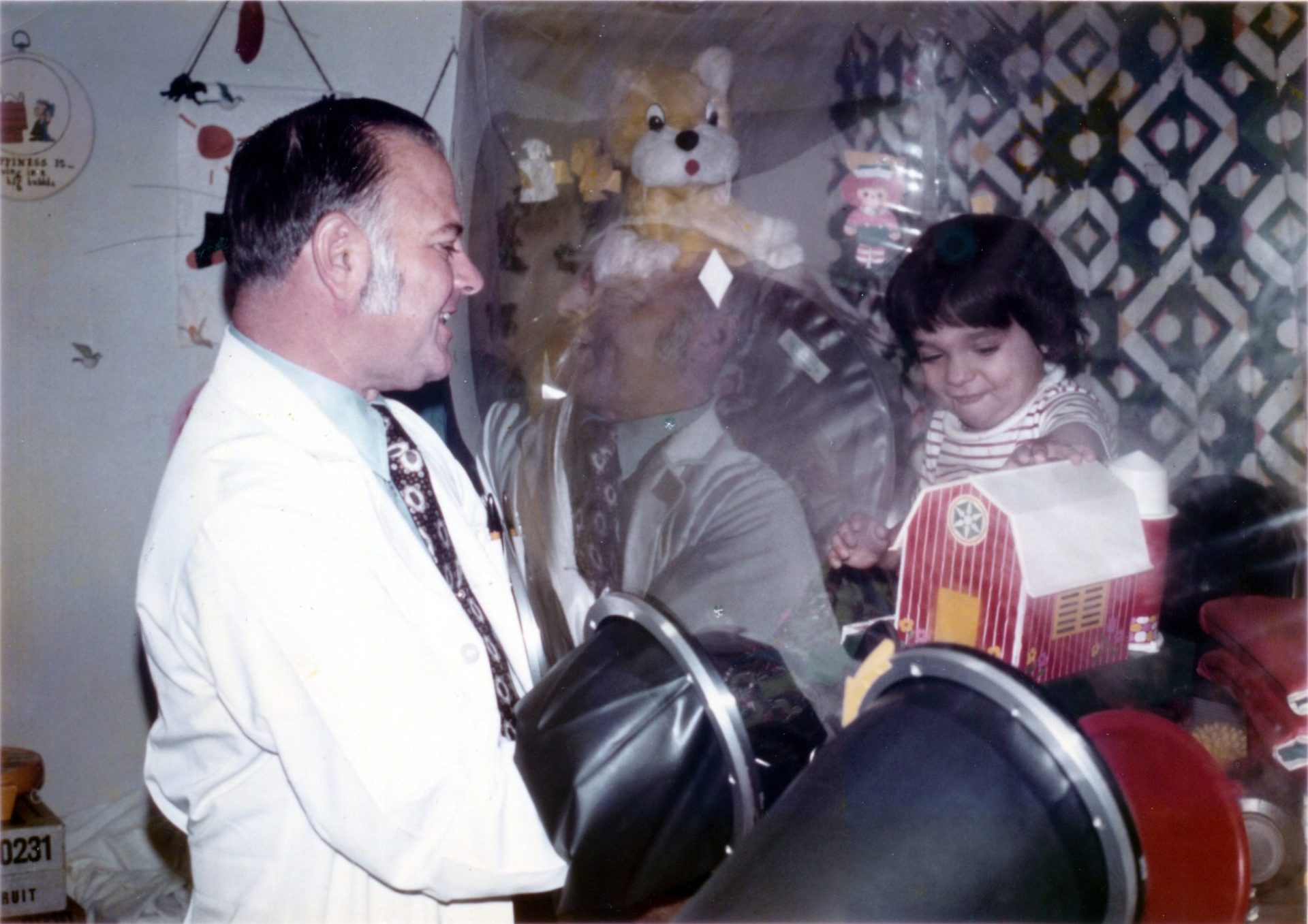Vetter’s parents were Carol Ann Vetter and David Joseph Vetter, Jr. Their first son, David Joseph Vetter III, also was born with SCID and died at 7 months old. Physicians advised the Vetters that any future male children they might conceive would have a 50% chance of inheriting the disease.
At the time, the only management available for children born with SCID was isolation in a sterile environment until a successful bone-marrow transplant could be performed. The Vetters, who had a daughter, decided to proceed with another pregnancy. Their third child, David Phillip Vetter, was born on September 21, 1971. A special sterilized cocoon bed was prepared for Vetter at his birth. Immediately after being removed from his mother’s uterus, Vetter entered the plastic germ-free environment that would be his home for most of his life.

Water, air, food, diapers, and clothes were sterilized before they could enter the sterile chamber. Items were placed in a chamber filled with ethylene oxide gas for four hours at 140 degrees Fahrenheit (60˚C), then aerated for a period of one to seven days before being placed in the sterile chamber.
After he was placed in the sterile chamber, Vetter was touched only through special plastic gloves attached to the walls of the chamber, which was kept inflated by air compressors that were so loud that communication with David was difficult. His parents and medical team, which included Dr. John Montgomery, sought to provide him as normal a life as possible, including a formal education, and a television and playroom inside the sterile chamber.
About three years after Vetter’s birth, the treatment team built an additional sterile chamber in his parents’ home in Conroe, Texas, and a transport chamber so that Vetter could spend periods of two to three weeks at home, with his sister and friends for company. A friend arranged for a special showing of Return of the Jedi at a local theater so that Vetter could attend the movie in his transport chamber. As he grew older, he became aware of the world outside his chamber and expressed an interest in participating in what he could see outside the windows of the hospital and via television.

In 1977, researchers from NASA used their experience with the fabrication of space suits to develop a special suit that would allow Vetter to get out of his bubble and walk in the outside world. Vetter was initially resistant to the suit, and although he later became more comfortable wearing it, he used it only seven times. He outgrew the suit and never used the replacement one provided for him by NASA.
Sadly in 1984, four months after receiving a bone marrow transfusion, David died from lymphoma – a cancer later determined to have been introduced into his system by the Epstein-Barr virus. Carol Ann carries on David’s legacy today through her work with IDF as a long-time member of the Foundation’s Board of Trustees.
Carol Ann believes, and science has stated, that because of what was learned from David’s gallant life and death, many children with SCID have since been diagnosed early, received bone marrow transplants, and now lead healthy lives. In her words, “David was a great blessing to our family and to the world.”
According to en.Wikipedia and primaryimmune.org. Source of photos: internet







